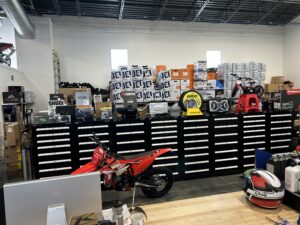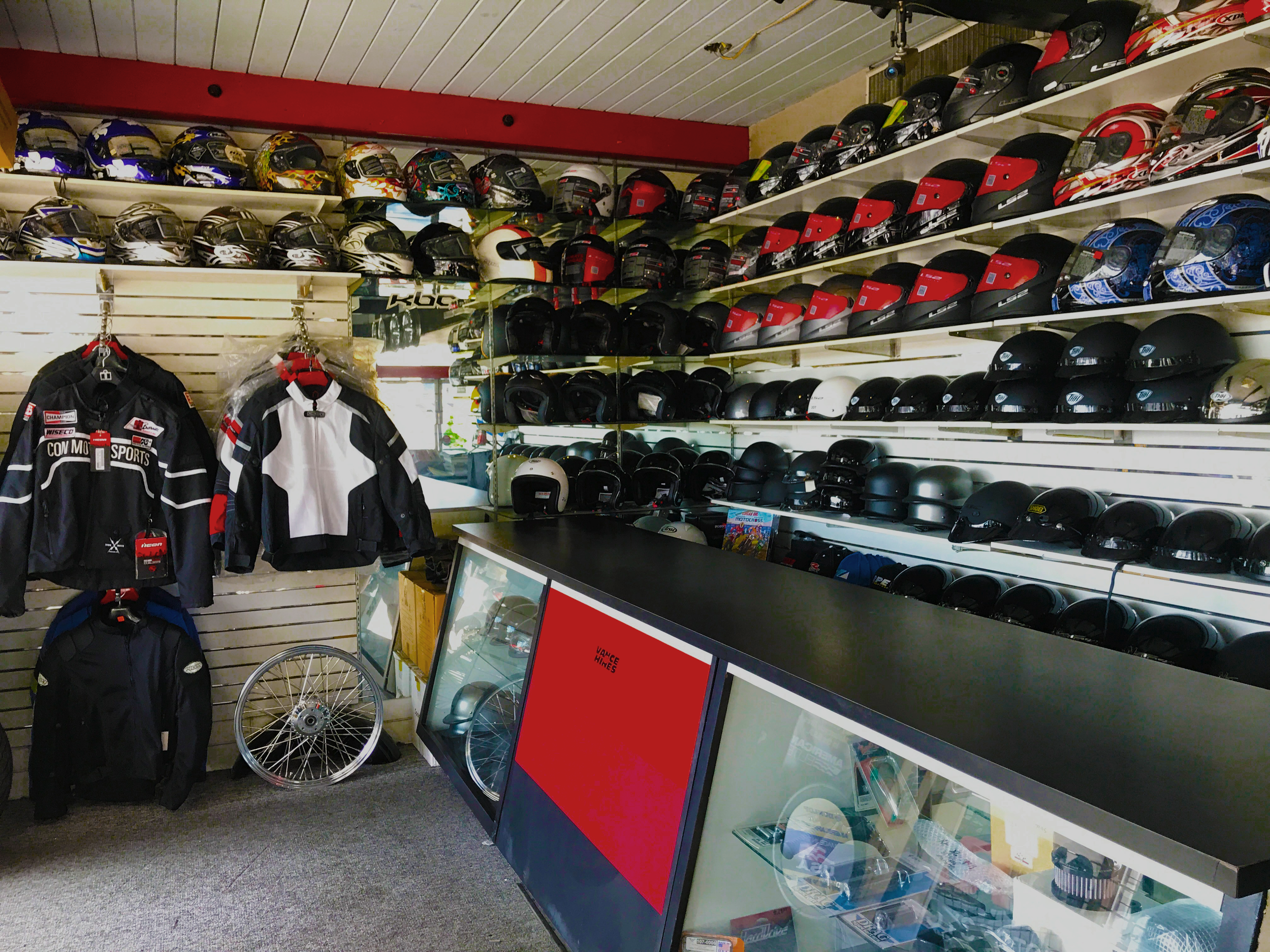Release Efficiency with Premium Motox Parts NZ Available Right Here
Release Efficiency with Premium Motox Parts NZ Available Right Here
Blog Article
Comprehending the Vital Parts of a Motorbike: A Comprehensive Overview for Lovers
For motorcycle enthusiasts seeking to boost their riding experience and ensure their bikes run smoothly, understanding the crucial parts of a motorcycle is vital. Each component, from the engine's complex functions to the vital function of the braking systems, not just impacts performance yet additionally safety and security and convenience. This overview will go through the essential components that every cyclist need to recognize with, enabling educated selections in both maintenance and possible upgrades. As we begin this exploration, one must ask: exactly how does each element interact to develop the seamless ride every lover looks for?
Engine Components

The camshaft plays a vital duty in controlling the timing of the engine's shutoffs, guaranteeing the exact opening and closing essential for efficient gas and air consumption, along with exhaust expulsion. This timing is essential to keeping optimum engine efficiency and effectiveness. In addition, the carburetor or fuel injection system, relying on the motorcycle design, is in charge of mixing air with gas in the correct ratio for combustion.
The cooling system, either air or liquid-based, functions to preserve the engine's temperature within operational limitations, protecting against overheating and ensuring durability - mx gear nz. Each part, meticulously developed and integrated, adds to the smooth operation of the engine, defining the motorcycle's power result and overall performance
Transmission System
Important to the bike's functionality, the transmission system makes certain reliable power transfer from the engine to the wheels. This system comprises several important elements, including the clutch, transmission, and final drive, each playing a crucial role in converting the engine's power into motion. The clutch, commonly run by a hand bar, offers to disengage the engine and involve from the transmission, permitting smooth gear adjustments and controlled velocity.
The gearbox, frequently described as the transmission correct, includes a collection of gears that cyclists can manually change through to adjust the bike's rate and torque outcome. These gears are set up in a sequence that enables the motorcycle to speed up efficiently and maintain optimal engine performance across various rates. The majority of motorbikes use a consecutive gearbox, requiring the cyclist to move gears in a fixed order.
Braking Devices
While recognizing the transmission system is key to using a motorcycle's power, equally crucial is the ability to regulate and quit that power properly, which is where braking devices enter play. Brakes are critical for security and efficiency, providing the biker with the needed control to browse numerous surfaces and conditions. Commonly, bikes include 2 kinds of stopping systems: disc brakes and drum brakes.
Disc brakes are recommended you read a lot more prevalent in modern motorcycles due to their premium efficiency. This system uses far better warmth dissipation, constant performance, and boosted stopping power, particularly in damp problems.
On the other hand, drum brakes, though much less common, are still discovered in some motorbikes. They work by pushing brake shoes against the internal surface of a drum connected to the wheel. While typically less effective in warmth dissipation and stopping power, drum brakes are easier and much more cost-efficient.
Comprehending these stopping systems' nuances enables motorcyclists to keep their motorcycles appropriately and appreciate the design that ensures efficient and safe stopping.
Suspension and Guiding
Suspension and steering systems are important elements that significantly influence a bike's handling and experience convenience. The shock absorber, being composed of forks Clicking Here at the front and shock absorbers at the rear, takes in road irregularities, enhancing security and control. Front forks, upside down or typically telescopic, compress and rebound to reduce effects, while back shock absorbers maintain tire contact with the road, essential for grip and safety and security.
Guiding, focused around the handlebars, attaches the motorcyclist to the motorbike's directional control. The steering head bearings guarantee smooth operation, permitting specific ability to move. Appropriate alignment and upkeep of these bearings are critical for foreseeable steering response and reducing cyclist tiredness.
The suspension's adjustability is another crucial facet; preload, damping, and rebound settings enable customization to match different riding styles and problems. This versatility is necessary for enhancing performance, whether browsing urban roads or taking on tough trails. Technologies like electronic suspension systems offer real-time changes, enhancing adventure high quality throughout diverse surfaces.

Electric Systems
After making certain a smooth and regulated experience via efficient suspension and guiding systems, attention turns to the electrical systems, a crucial element of contemporary motorbikes. These systems play an essential duty not only in beginning the engine however likewise in powering various components that boost the functionality and security of the motorcycle.
At the heart of a motorcycle's electrical system is the battery, which shops electric energy needed for beginning the engine and powering auxiliary systems - motorcycle parts nz. The generator or generator, paired with the rectifier-regulator, guarantees the battery stays billed while the bike is in operation, converting mechanical energy into electric power and maintaining voltage levels
The ignition system, another vital part, is liable for firing up the air-fuel mix in the engine's cyndrical tubes. Modern motorcycles frequently utilize an electronic ignition system, providing higher effectiveness and dependability compared to conventional systems.
Illumination systems, including headlights, tail lights, and indicators, are also important, guaranteeing exposure and safety and security for the cyclist. Added digital parts such as sensors, control units, and presents add to sophisticated functions like fuel injection administration, anti-lock braking systems (ABS), and Bonuses electronic control panels, additionally improving the riding experience.
Conclusion
A complete understanding of a bike's necessary components, consisting of the engine, transmission system, braking devices, suspension, guiding, and electrical systems, is crucial for lovers intending to optimize efficiency, convenience, and security. Proficiency of these elements permits informed choices relating to upkeep and upgrades, eventually boosting the riding experience. By integrating this understanding, riders can ensure their bikes operate at peak effectiveness and integrity, thereby maximizing both pleasure and long life of their lorries.
For motorcycle lovers looking to boost their riding experience and ensure their bikes run smoothly, understanding the crucial components of a motorbike is vital.Integral to the motorcycle's functionality, the transmission system guarantees efficient power transfer from the engine to the wheels.While recognizing the transmission system is essential to harnessing a motorbike's power, just as essential is the capability to manage and quit that power properly, which is where stopping mechanisms come into play. Normally, bikes include two types of braking systems: disc brakes and drum brakes.
A thorough comprehension of a motorcycle's necessary parts, consisting of the engine, transmission system, stopping devices, suspension, guiding, and electric systems, is vital for fanatics intending to optimize performance, security, and comfort.
Report this page